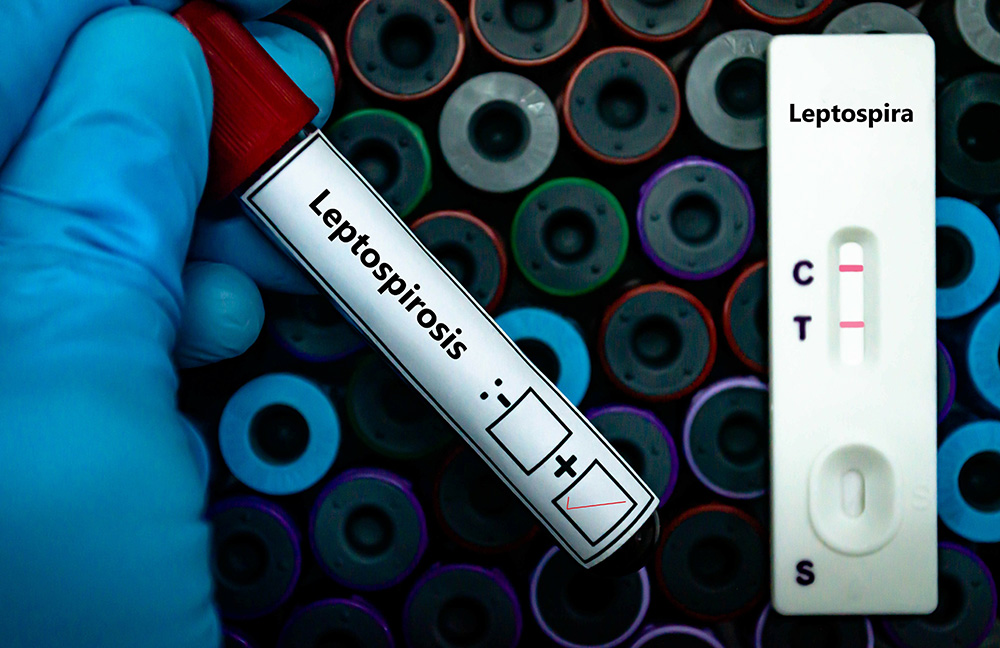
Despite posing a significant public health threat, particularly in low- and middle-income countries, three bacterial diseases have not received the necessary attention by global health organisations. Leptospirosis, melioidosis, and rickettsioses are not even listed among the World Health Organization's (WHO) neglected tropical diseases (NTDs). Experts argue that this neglect perpetuates a cycle of avoidable hospitalisations and deaths each year, especially among vulnerable populations. They stress the urgent need to break this cycle by increasing support for research, surveillance, diagnostics, and treatments to alleviate the burden of these diseases.
‘Forgotten diseases of neglected populations’
In a recent paper published in the journal PLOS Neglected Tropical Diseases, the experts, including NRI’s Professor Steven Belmain, highlight leptospirosis, melioidosis, and rickettsioses as prime examples of largely endemic bacterial diseases with epidemic potential. Endemic diseases frequently recur in specific areas, while those with epidemic potential can spread quickly and widely within populations.
According to the publication, these diseases are a significant source of public health emergencies of international concern. They are classified as ‘forgotten diseases of neglected populations,’ imposing a substantial global burden that disproportionately affects poor, marginalised, and hard-to-reach populations in low- and middle-income countries. Unfortunately, these vulnerable groups already face multiple medical, social, and economic challenges.
The authors explain that these diseases are often concurrently hyperendemic in the same locations, such as the tropical countries of Southeast Asia. This is due to shared risk factors, including social determinants affecting disease outcomes, environmental reservoirs, and at-risk populations. Importantly, they are perfect examples of diseases impacted by a lack of awareness and systematically underdeveloped surveillance efforts, which are crucial for innovative research and control strategies.
A vicious cycle of neglect
Considering their significant public health burden, the authors note that these diseases have been neglected by international institutions and policymakers, leading to a vicious cycle of continued neglect. For example, the global disease burdens of leptospirosis and melioidosis is higher than that of many diseases on the WHO NTD list. These two diseases cause more deaths than rabies, dengue or schistosomiasis.
Lack of investment in research and development, inadequate diagnostic and surveillance facilities, and insufficient epidemiological data contribute to their continued neglect. This neglect then leads to underreporting and a lack of comprehensive data, which impedes resource allocation, fails to incentivise R&D investment, and hinders the development of effective interventions.
Compounding factors such as rising antimicrobial and insecticide resistance, vaccine hesitancy and the assumption that diseases not on the WHO NTD list already have sufficient attention and funding, make this neglect particularly concerning.
In the same context of neglect, the paper underscores the importance of vector and rodent control. Steven Belmain, Professor of Ecology at NRI and a leading expert on rodents explained: ‘Leptospirosis is an environmentally transmitted disease, typically spread through the urine of rodents contaminating water, which then comes into contact with people and other animals. Rickettsial diseases are often transmitted by ticks, mites, and fleas, with rodents acting as reservoirs. These blood-feeding arthropods acquire the infection from rodents and can then bite humans, transmitting the disease. Reducing the abundance and density of rodents in sustainable ways could significantly decrease the chances of humans contracting these neglected diseases.’
Breaking the cycle of neglect

The authors argue that now is a pivotal moment to focus attention on these neglected diseases. They propose that leveraging current technologies and methods could significantly improve diagnosis and epidemiological studies. For instance, genetic analyses could be used for disease monitoring, while tools developed to respond to COVID-19 could be expanded to include bacterial diseases.
Modern vaccines could be modified to target these diseases, enabling a more customised prevention approach. This adaptation could make treatments more widely available and affordable, particularly in developing countries with limited resources.
One Health, a collaborative, multisectoral and transdisciplinary approach to improve human, animal and environmental health will also be vital. Leptospirosis, melioidosis, and rickettsioses exemplify One Health diseases due to their complex transmission cycles involving animal and environmental routes. Political support and funding for One Health programs can be directed towards combating these diseases.
The experts’ call is timely as we commemorate World Neglected Tropical Diseases Day. On this day, the WHO calls on all stakeholders to unite, act, and eliminate neglected tropical diseases. With their insights in this paper, the experts illuminate a pathway towards a future where no disease is neglected, especially in the world’s most vulnerable communities.
Read the paper here.

